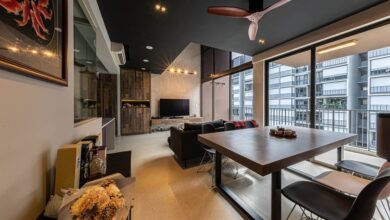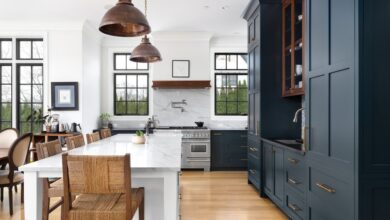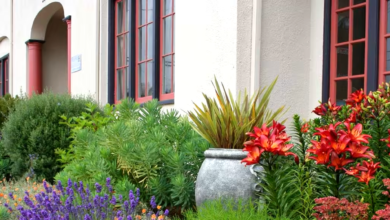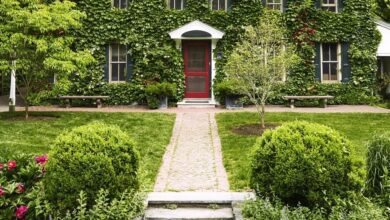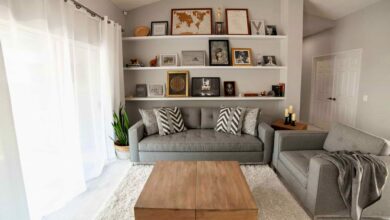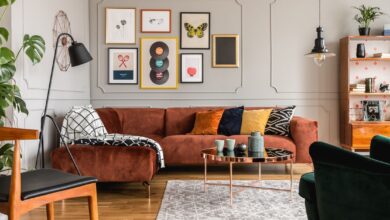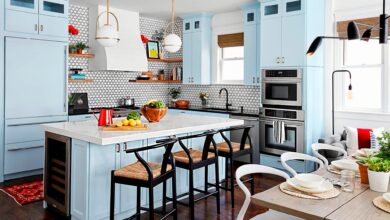How to Design a Pet-Friendly Home Without Sacrificing Style
Whether you’re renovating a room or redecorating your entire house, this guide will help you seamlessly design a pet-friendly home with chic features.

Creating a stylish, comfortable space while also meeting the needs of your furry friends may seem like a design challenge—but it doesn’t have to be. Learning how to design a pet-friendly home without compromising on style is all about making thoughtful, practical choices that balance aesthetics with pet safety and functionality. Whether you’re renovating a room or redecorating your entire house, this guide will help you seamlessly merge pet-friendly features with chic design.
Why Designing a Pet-Friendly Home Matters
Our pets are more than just animals—they’re part of the family. And just like any family member, they deserve to feel safe, comfortable, and included in your living environment. At the same time, pet-related wear and tear on furniture, floors, and décor can quickly become frustrating if your home isn’t set up for it. That’s why many homeowners are now investing in stylish pet-friendly interiors that cater to both human and animal needs.
1. Start with Pet-Safe Flooring
Flooring plays a crucial role when you design a pet-friendly home. Pets can be tough on floors, especially with claws, accidents, and shedding.
Best Flooring Options for Pet Owners:
- Luxury Vinyl Plank (LVP): Durable, waterproof, and scratch-resistant. It’s also stylish and available in a variety of finishes.
- Tile: Ceramic or porcelain tile is an excellent choice. It’s easy to clean and won’t absorb pet odors.
- Engineered Hardwood: If you love the look of real wood, go for engineered hardwood with a tough, scratch-resistant finish.
- Stain-resistant Carpets: For those who prefer a cozy feel underfoot, opt for low-pile carpets treated with stain resistance.
Avoid high-pile rugs or softwoods like pine, which scratch easily and absorb stains.
2. Choose Durable, Washable Fabrics
Fabrics are another key element when aiming to design a pet-friendly home. Upholstery should be tough enough to withstand claws, dirt, and hair.
Pet-Friendly Fabric Options:
- Microfiber: Tightly woven and easy to clean, microfiber is ideal for resisting stains and claw snags.
- Leather: While it can scratch, leather is easy to wipe clean and doesn’t attract fur.
- Outdoor Fabrics (e.g., Sunbrella): Made to resist fading and moisture, these are great choices for indoor use too.
Pro Tip: Choose patterns or textured fabrics to help camouflage pet hair and minor wear.
3. Integrate Stylish Pet Zones

Rather than having pet beds, litter boxes, or feeding stations as afterthoughts, incorporate them into your interior design.
Creative Pet Zone Ideas:
- Built-in Dog Beds: Customize cabinetry or furniture to include dedicated sleeping spots.
- Litter Box Nooks: Create discreet hiding spots for litter boxes in cabinets, laundry rooms, or under staircases.
- Stylish Feeding Stations: Use raised feeders with sleek materials like wood or metal to blend with your decor.
- Window Perches and Cat Trees: Integrate climbing furniture that matches your color scheme and layout.
Designing around your pet’s needs doesn’t mean compromising on aesthetics. Custom-built pet areas can even elevate your home’s appeal.
4. Use Pet-Safe Materials
When selecting materials for furniture or renovations, prioritize those that are non-toxic and safe for pets.
Important Considerations:
- Avoid VOCs: Volatile Organic Compounds found in some paints and finishes can be harmful to pets.
- Choose Non-toxic Paints: Look for water-based paints and eco-friendly brands.
- Secure Hazardous Items: Store cleaning products, plants, and chemicals out of reach or in pet-proof cabinets.
Some common houseplants, like lilies and philodendrons, are toxic to animals. Swap them for pet-safe plants like spider plants, bamboo palms, or Boston ferns.
5. Keep Décor Minimal and Functional
When you design a pet-friendly home, simplicity can go a long way. Pets are curious and playful, so having less clutter and more open space reduces the risk of accidents.
Pet-Friendly Design Tips:
- Secure Decorations: Place delicate or breakable items on high shelves or behind glass doors.
- Use Baskets and Storage Bins: These can house toys, leashes, and grooming supplies while keeping your space tidy.
- Opt for Wall Art: Instead of fragile tabletop décor, use framed prints or paintings to add personality.
Minimalism doesn’t mean boring—it means choosing pieces that are both practical and stylish.
6. Incorporate Rugs Strategically
Rugs are a great way to define spaces and add warmth, but they should be pet-proof.
Best Rugs for Pet Owners:
- Indoor/Outdoor Rugs: Water-resistant, durable, and easy to clean.
- Low-Pile Rugs: Easier to vacuum and less likely to trap pet hair.
- Patterned or Multi-colored Rugs: Hide dirt and stains better than solids.
Place rugs in high-traffic pet areas like entryways or under food bowls for added functionality.
7. Create Vertical Spaces for Cats
Cats love to climb, perch, and observe their environment. Giving them vertical options not only improves their mental stimulation but also prevents damage to your furniture.
Vertical Design Features:
- Wall-mounted Shelves: Install shelves in a staggered design to let cats climb.
- Tall Scratching Posts: Choose designs that complement your decor—modern wood, sisal-wrapped, or neutral tones.
- Cat Hammocks: Hang these by sunny windows for a cozy lounging spot.
When you design a pet-friendly home with felines in mind, vertical space becomes just as important as floor space.
8. Make Outdoor Areas Safe and Stylish
If you have a backyard, balcony, or porch, you can extend your pet-friendly design to these areas too.
Outdoor Pet Design Ideas:
- Secure Fencing: Ensure fences are tall enough and have no gaps.
- Paw-Friendly Ground Covers: Use soft grass, mulch, or artificial turf.
- Shaded Retreats: Provide covered areas or stylish dog houses.
- Pet-Friendly Landscaping: Avoid toxic plants and use raised garden beds or stone borders to section off areas.
Adding pet-safe water features or obstacle courses can make outdoor time more enjoyable for your furry friends.
9. Use Smart Tech for Pet Safety
Technology can enhance how you design a pet-friendly home, especially when it comes to security and comfort.
Pet Tech Essentials:
- Smart Cameras: Monitor your pet while you’re away.
- Automatic Feeders: Ensure consistent mealtimes.
- Pet Doors with Microchip Access: Let your pet in and out while keeping other animals out.
- Temperature Control: Use smart thermostats to maintain a comfortable climate.
Tech integration keeps your pets safe and adds a modern, sleek touch to your living space.
10. Keep Maintenance in Mind
Maintaining a clean home with pets doesn’t have to be a chore—if you design with easy upkeep in mind.
Maintenance Tips:
- Vacuum Often: Invest in a pet-specific vacuum cleaner.
- Use Washable Slipcovers: Especially for couches and chairs.
- Keep Pet Grooming Supplies Handy: Regular grooming reduces shedding and odors.
- Place Doormats at Entrances: Catch dirt before it enters the home.
A well-maintained space always looks better—and smells fresher—even with pets.
Final Thoughts: Balance, Beauty, and Function
You don’t have to choose between style and functionality when you design a pet-friendly home. With the right materials, smart storage, and creative planning, your living space can be both beautiful and accommodating to your pets’ needs.
Remember, your home should reflect your lifestyle—and if pets are part of it, designing around them shows care and intentionality. From chic fabrics to custom pet nooks and modern tech, you have countless ways to make your home a haven for every family member—furry ones included.


